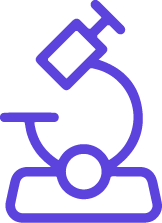Falsified medicines could seriously harm the health of patients and may even put their lives at risk. A counterfeit product can contain wrong dosages, toxic ingredients, or lack the active pharmaceutical ingredient on which patients rely for their therapy.
With packaging and labeling that is replicated to look identical to branded products and supply chains that are becoming longer and more complex, the opportunities for counterfeiting are on the rise.
The growing market for counterfeit medicine
A 2013 study conducted by the European Union Intellectual Property Office showed that 7.5% of the entire EU economy is directly impacted by counterfeiting. Up to $16 billion of sales in the pharmaceutical industry are lost due to counterfeiting. Minor sentences, low fines, and high return on investments all result in a growing market for counterfeit medicine.
According to the International Institute of Research against Counterfeit Medicines (IRACM), an investment of $1,000 in the purchase of heroin could result in a yield of $20,000 in return. In comparison, the same investment in counterfeit cigarettes can yield $43,000, and the return on counterfeit pharmaceuticals might be as much as $500,000. The numbers do not lie. The risk/reward ratio is clearly unbalanced towards counterfeiting.
Falsified Medicine Directive (2011/62/EU)
Counterfeit medicine poses a direct and serious threat to public health. In an attempt to reduce counterfeiting in the pharmaceutical industry, the European Union has issued the Falsified Medicine Directive (2011/62/EU), will which take effect on 9 February 2019.
This directive mandates the end-to-end implementation of serialization – enforcing unique product identification together with tamper-proof packaging. Serialization will be done using the GS1 standard, a harmonized language for business communication that is widely used in the world.
A combination of the Global Trade Item Number (GTIN), a serial number, the lot number, and the expiry date of the drug product must be printed on the packaged product to make it uniquely identifiable.
The Falsified Medicine Directive requires this information to be printed in a human-readable format as well as in a data matrix (2D barcode) on the saleable unit. Pharmaceutical manufacturers – whether it be Market Authorization Holders (MAHs) or Contract Manufacturing Organizations (CMOs) – as well as their supply chain partners will have to comply with this directive.
The EU is certainly not the first of its kind in its legislative push for the serialization of pharmaceutical products. More than 40 countries worldwide have initiated similar legislation in response to the increase of falsified medicines and their illegal distribution.
The difference is that starting from 9 February 2019 every pharmaceutical product that is released or manufactured for the European market will have to comply with the Falsified Medicine Directive. This hard deadline approach forms a stark contrast with other legislations (outside the EU) that follow a gradual implementation.
Furthermore, some of those governments allowed for significant delays in the enforcement of their serialization legislation. As the implementation of serialization over the entire pharmaceutical industry in such a short amount of time seems to be challenging, arbitrary deadlines could make vital therapies inaccessible if stakeholders can’t reach a workable solution by the due date.
Country-specific requirements
The Falsified Medicine Directive also takes into account country-specific requirements. Allowing exceptions and flexibility toward some member countries contributes to a more delicate implementation of serialization. Some countries, for example, request extra information in their printed data, such as a National Health Reimbursement Number or the manufacturing date.
Those measures can place an extra burden on production processes, such as printing equipment that needs to cope with additional printing data without slowing down the production speeds or the validation impact for the extended printed capability.
Additionally, countries that have an existing, similar serialization system in place are allowed to postpone the implementation of the Falsified Medicine Directive until 2025 and continue working with their drug tracking system (e.g. Italy with its ‘Bollino’ program).
Opportunity to improve and modernize
Despite all that, serialization should not be seen as ‘yet another regulation to comply with’, but rather as a unique opportunity to improve and modernize an industry that is quite conservative.
Yes, it does require substantial investments in new equipment or an upgrade of existing ones, IT infrastructure for the creation, processing, and distribution of massive amounts of serialized data, and an adjustment of the operational aspects of manufacturing processes. And it also brings an extra regulatory layer into GMP compliance.
But at the same time, it’s a leap toward the digitization of pharmaceutical manufacturing. The extensive amount of data that is generated can help pharmaceutical companies acquire a holistic and transparent view of their supply chain, resulting in more safety, and reliability and creating a stable foundation for boosting consumer confidence and brand image. Serialization can also improve control over the supply chain by allowing for data-driven decisions. Additionally, the integration into other business aspects can enhance the performance of marketing and sales efforts.
Keep in mind that serialization is more than just commissioning new equipment and printing serialized data on packaging. It might seem overwhelming at first, but with the correct long-term vision, mindset, tools, and support it can turn into a real competitive advantage.
At QbD, we work with a team of experienced consultants who like to get things done. With a proven track record in the successful implementation of serialization, we like to be challenged and go the extra mile.
Want to know how our experts can help you achieve your serialization goals? Do not hesitate to contact us and find out how we can add value to your serialization project.











.jpg)
.jpg)





















.jpg)






















.png)

.jpg)